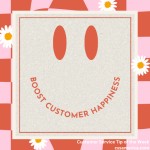
The television show The Voice is a singing competition. The opening episodes of every season begin with individuals singing while judges have their backs to the singer. The judges can’t see the singer, so they are evaluating the performer purely based on their voice.
Oftentimes, when the judge turns around, he or she is SHOCKED at the look of the performer. Maybe the judge figured the singer would be a bigger person because they have a deep voice, or the judge assumed there would be an older person singing because of the control that they had in their voice.
The judges’ perceptions of the individual are often wrong, but those are based on the voice that they hear.
Our customers are very similar. Until they really get to know us, they often judge our personalities or what they think of us, and that judgment is largely based on our voice. If it’s a telephone call, it’s almost exclusively based on our voice.
But how many of us really think about our voice when we’re talking with someone?
Well, we should think about it, regardless of whether we’re talking to a family member we’ve known for 30 years or a customer we’ve spoken with for 30 seconds.
The tone conveys a message: Are you bored or engaged? Are you happy or upset? Are you distracted or focused? Do you care or not?
And often the positive attributes of voice involve characteristics such as having some fluctuation. The positive attributes involve having a little pace without talking too fast, talking just quick enough to show some energy and enunciate enough to be understood. They involve emphasizing the most important words, and the attributes involve a little bit of tempo instead of a staccato – an almost excessive emphasis on each syllable.
When you want to come across in a positive way to the customer, view them as a judge on The Voice.
Signup for FREE Tips! Contact Us More Resources for You Visit Our Home Page























